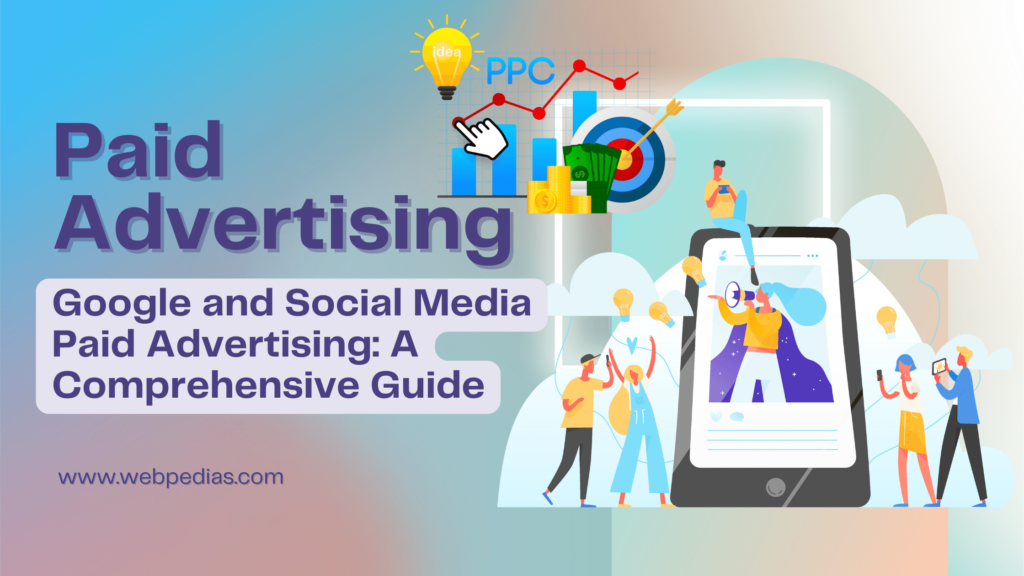Google and Social Media Paid Advertising: A Comprehensive Guide
In today’s digital age, businesses are constantly looking for effective ways to reach their target audiences. The two most powerful tools in their marketing arsenal are Google Ads and social media paid ads.
These platforms allow businesses to connect with potential customers, drive traffic, and increase conversions. In this comprehensive guide, we’ll explore the world of paid advertising on Google and various social media platforms, providing insights, strategies, and tips to help you make the most of your advertising budget.
Understanding Google Ads
Google Ads, formerly known as Google AdWords, is Google’s advertising platform that allows businesses to display advertisements on Google’s search engine results pages (SERPs) and throughout the Google Display Network. Here are the key aspects:
1. Search Ads
Keyword targeting: Google Ads allows you to bid on specific keywords related to your business. When users search for these keywords, your ads appear at the top of search results.
Ad Rank: Google determines the position of your ad based on factors like bid amount, ad relevance, and landing page experience.
2. Display Ads
Visual appeal: Display ads are visually appealing and can include images, videos, and interactive elements. They are shown on websites in the Google Display Network.
Targeting options: You can target specific demographics, interests, and websites to display your ads to the most relevant audiences.
3. Shopping Ads
Product Showcase: Ideal for e-commerce businesses, Shopping ads display product images, prices, and store information directly in search results.
Merchant Center integration: You’ll need to set up a Google Merchant Center account to effectively create and manage Shopping ads.
Utilising the Influence of Paid Ads on Social Media
Social media platforms like Facebook, Instagram, Twitter, LinkedIn, and Pinterest offer paid advertising opportunities. Here’s how to take advantage of them:
1. Facebook and Instagram Ads
Audience targeting: Facebook Ads Manager offers extensive targeting options, letting you reach users based on demographics, interests, and behavior.
Ad Formats: Choose from a variety of ad formats including image ads, video ads, carousel ads, and more.
2. Twitter Ads
Promoted Tweets: Use Twitter’s Promoted Tweets feature to get your Tweets out to a wider audience.
Follower Campaigns: Get more followers by promoting your account among users who are likely interested in your content.
3. LinkedIn Ads
Professional audience: LinkedIn is ideal for B2B businesses, with options to target users based on their job title, company, industry, and more.
Sponsored Content: Promote your company updates, articles, and videos to reach a professional audience.
4. Pinterest Ads
Visual Discovery: Pinterest is a visual platform, making it perfect for businesses with attractive products or services.
Promoted Pins: Increase the visibility of your Pin to a wider audience, which will drive traffic to your website.


Creating Effective Advertising Campaigns
No matter which platform you choose, it is essential to create effective advertising campaigns. Here are some key strategies:
1. Clear objective
Define your goals: Do you want to increase website traffic, generate leads, or increase sales? Be clear about your objectives before starting your campaign.
2. Target audience
Know your audience: Understand the demographics, interests, and pain points of your ideal customers. Tailor your ads accordingly.
3. Compelling Ad Copy
Write compelling headlines and ad copy that your audience will love. Highlight unique selling points and benefits.
4. Attractive creative
Use high-quality images and videos that grab attention. Make sure the visuals are consistent with your brand identity.
5. A/B testing
To choose the most effective ad, try out various variations. Experiment with headlines, ad copy, visuals, and calls to action.
6. Landing Page Optimization
Create specialized landing pages that support the theme of your advertisement. Optimize these pages for conversions.
Measuring Success and ROI
To evaluate the success of your paid ad campaigns, you need to track key performance metrics:
Click-through rate (CTR): Measures how many users click on your ad compared to the number of times it is displayed.
Conversion rate: Track the percentage of users who take the desired action (for example, making a purchase) after clicking your ad.
Return on Investment (ROI): Calculate the return on your ad spend to determine the profitability of your campaigns.
Cost Per Click (CPC): Monitor how much you pay for each click on your ad.
Conclusion
In the ever-evolving landscape of digital marketing, Google Ads and social media paid advertising are indispensable tools for businesses that want to expand their online presence, attract new customers, and increase revenue.
By understanding the nuances of each platform, crafting compelling campaigns, and constantly monitoring and optimizing your efforts, you can maximize your ROI and achieve your marketing goals. Embrace the power of paid advertising, and watch your business grow in the digital realm.



